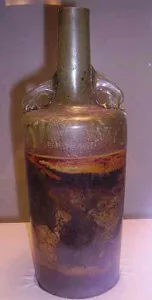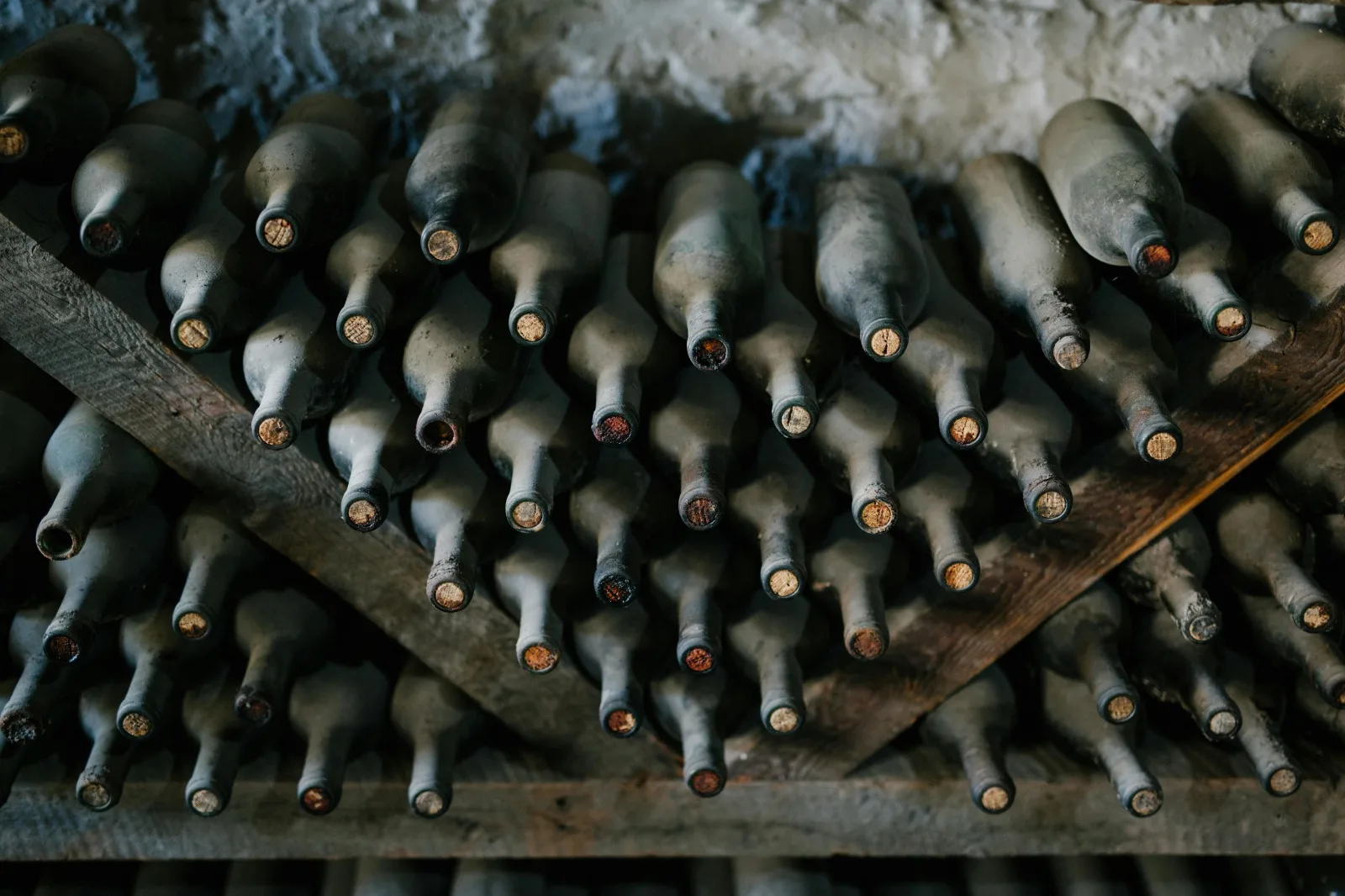Deep within the historical depths of the Pfalz Historical Museum lies an ancient relic that has piqued the curiosity of archaeologists, historians, and wine enthusiasts alike: the Speyer wine bottle. Unearthed in 1867 from a Roman tomb, this remarkably preserved artifact is the world’s oldest known unopened bottle of wine, dating back to approximately 325-350 AD.
The Speyer wine bottle, also known as the Römerwein, was discovered in the vicinity of Speyer, a city renowned for its rich Roman heritage. The tomb where the bottle was found belonged to a Roman nobleman and his wife. Alongside the bottle were other grave goods typical of the period, intended to accompany the deceased in the afterlife.
Measuring about 1.5 liters, the bottle is made of thick, greenish-yellow glass, adorned with intricate designs typical of Roman craftsmanship. Its unique dolphin-shaped handles and robust body hint at the importance of its contents and the status of its owners. But what truly sets this bottle apart is its contents: a liquid mix that has miraculously survived almost 1,700 years.

The survival of the wine inside the Speyer bottle is attributed to a combination of factors. The bottle’s airtight seal, achieved with a mixture of olive oil and a wax plug, prevented the oxidation that typically spoils wine. Additionally, the consistent temperature and humidity within the tomb created an environment conducive to preservation.
The wine’s appearance today is quite unlike the vibrant reds and whites we are accustomed to. The liquid has taken on a viscous, resin-like consistency, its color shifted to a murky brown. It’s likely that much of the original alcohol has evaporated or transformed over the centuries, leaving behind a mixture that is more akin to a syrup than a drinkable beverage.
One of the most compelling aspects of the Speyer wine bottle is the ongoing debate about whether it should be opened. Scientists and historians are divided on this issue. On one hand, opening the bottle could provide invaluable insights into ancient winemaking techniques and the diet of the Roman elite. Chemical analysis of the contents could reveal the types of grapes used, fermentation processes, and even the presence of additives like herbs and spices.
However, the act of opening the bottle carries significant risks. The introduction of oxygen after nearly 1,700 years could lead to rapid degradation of the contents, destroying potential historical evidence. Moreover, the bottle’s integrity might be compromised during the process, jeopardizing its status as a unique historical artifact.
The Speyer wine bottle is more than just an ancient curiosity; it is a testament to the sophisticated culture and daily life of the Romans. Wine was central to Roman social and religious practices, symbolizing wealth, status, and divine favor. The Romans were adept vintners, employing advanced techniques in cultivation, fermentation, and storage of wine. The survival of this bottle offers a tangible connection to these ancient practices.
In Roman society, wine was consumed by all social classes, albeit in varying qualities. The elite, such as the owners of the Speyer bottle, enjoyed the finest vintages, often importing wines from regions famed for their production, like Gaul, Hispania, and Greece. The wine bottle’s ornate design and the fact that it was buried with its owners underscore the importance of wine in funerary rituals, believed to appease the gods and ensure a favorable afterlife.
The Speyer wine bottle continues to captivate modern audiences. It has been the subject of numerous studies, exhibitions, and even culinary speculations. Some modern winemakers are inspired by ancient techniques, experimenting with traditional methods of production and storage to recreate the flavors of antiquity. The bottle also frequently features in discussions about the durability and preservation of organic materials, offering lessons for contemporary conservation practices.
In the digital age, the Speyer bottle has garnered significant attention online, with history buffs and wine enthusiasts alike sharing their fascination. It symbolizes the enduring human connection to history and the continuous quest to uncover and understand our past.
As it stands, the Speyer wine bottle remains unopened, its secrets securely held within its ancient glass walls. It is a silent yet eloquent witness to a bygone era, offering a unique glimpse into the Roman way of life and their sophisticated practices. While the debate over whether to open the bottle continues, its mere existence is a profound reminder of the ingenuity and cultural richness of the Romans.
For now, visitors to the Pfalz Historical Museum can marvel at this extraordinary relic, imagining the journeys it has seen and the stories it could tell. The Speyer wine bottle, steadfast in its sealed silence, continues to inspire awe and curiosity, bridging the gap between the ancient world and our modern one.
